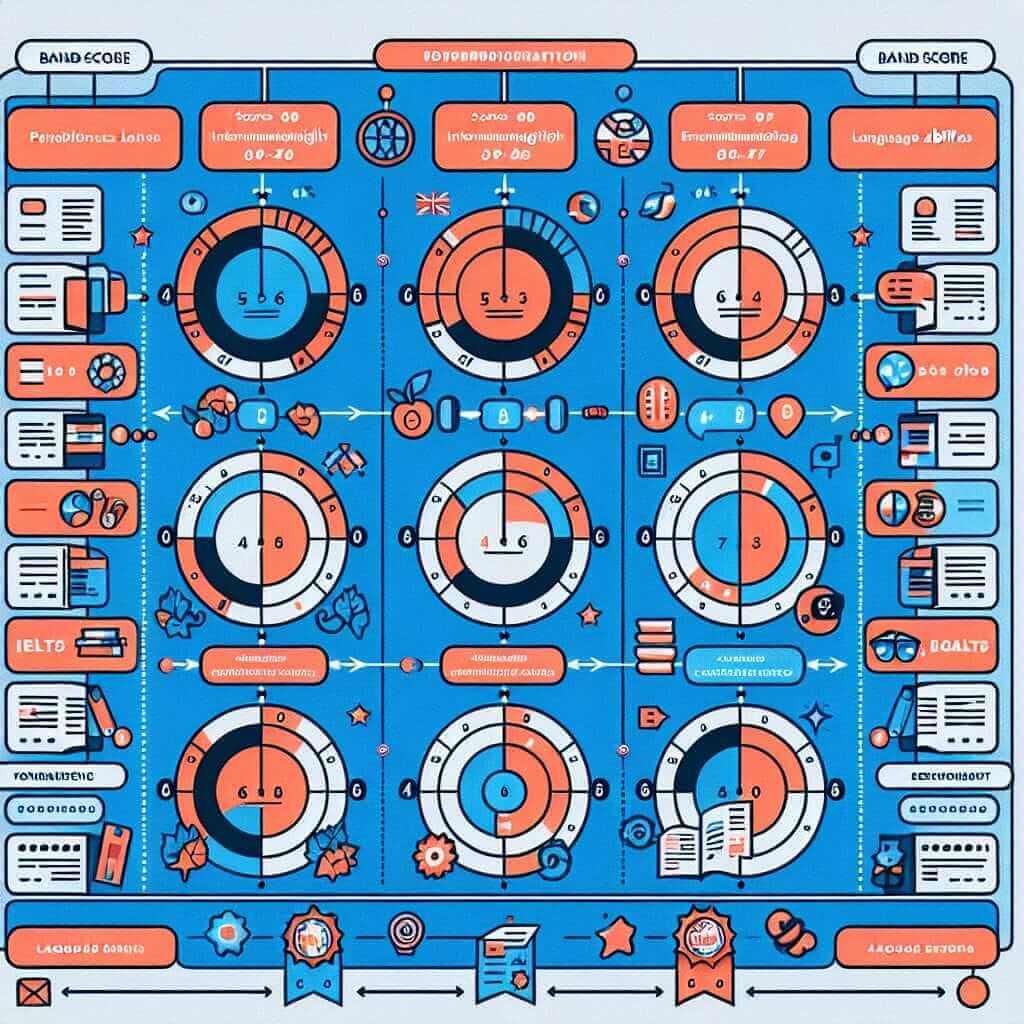As an IELTS instructor with over 20 years of experience, I understand the importance of effective practice. One question I often encounter from students is, “Why does IELTS Practice Test 5 use band scores of 5, 6, 7, and 8?” This is a great question, and understanding the answer can significantly impact your IELTS preparation.
Understanding the Significance of Band Scores 5, 6, 7, and 8
These specific band scores are not arbitrarily chosen. They represent significant milestones in English language proficiency according to the IELTS band descriptors:
- Band 5 (Modest User): This score signifies a student who can handle basic communication but may make frequent errors and struggle with complex language.
- Band 6 (Competent User): A student achieving this score demonstrates better control of the language, with fewer errors and an ability to understand and use a wider range of vocabulary and grammar.
- Band 7 (Good User): This band reflects a student who can communicate effectively and flexibly, with good grammatical accuracy and a wide-ranging vocabulary.
- Band 8 (Very Good User): Students achieving a band 8 showcase near-native fluency and accuracy, handling complex language with ease.
These bands are strategically used in Practice Test 5 to:
1. Provide a Realistic Exam Experience
IELTS Practice Test 5, by using a range of band scores in its sample answers, simulates the real exam environment. In the actual test, you will encounter responses from examiners representing diverse proficiency levels. This range helps you:
- Familiarize yourself with different pronunciation styles and accents.
- Learn to comprehend various levels of fluency and coherence.
- Develop strategies for responding to prompts effectively, even if the examiner’s English proficiency differs from yours.
2. Facilitate Self-Assessment and Progress Tracking
By providing sample answers across these band scores, Practice Test 5 empowers you to:
- Critically evaluate your own performance.
- Compare your responses to the sample answers and identify areas for improvement.
- Gain a clearer understanding of the language features and skills required to achieve your desired band score.

Examples from IELTS Speaking Tests
Let’s consider a Part 2 Speaking prompt:
Describe a time you had to use your imagination.
Imagine you provide a detailed response, but your grammar and vocabulary are slightly limited. You might compare your answer to the Band 6 sample answer and realize you need to focus on using more complex sentence structures and expanding your lexical range.
Conversely, you may find your answer surpasses the Band 6 example and aligns more closely with the Band 7 sample. This insight would indicate you are on the right track and encourage you to maintain your current study strategies.
Tips for Maximizing Your Practice Test 5 Experience
- Don’t just take the test – analyze it. Carefully review the band descriptors and compare your performance to the sample answers.
- Record yourself speaking. This allows for a more objective self-assessment of your fluency, pronunciation, and coherence.
- Focus on identifying your weaknesses. Pinpoint areas where you consistently fall short of your target band score and prioritize those in your study plan.
- Seek feedback from an experienced IELTS instructor. They can provide personalized insights and strategies for improvement.
Conclusion
Understanding why IELTS Practice Test 5 incorporates band scores 5, 6, 7, and 8 is crucial for effective preparation. Use this knowledge to your advantage. Embrace the challenge, analyze your performance, and strive for continuous improvement. Your dedication and strategic practice will pave the way to achieving your desired IELTS band score.